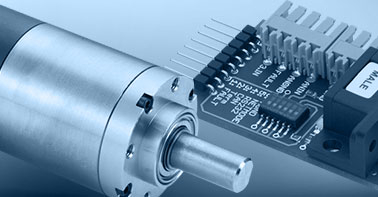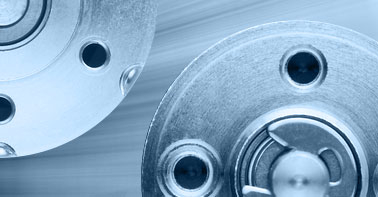- info@ems-ltd.com
- 0118 9817391
Home > PR > Avoiding DC motor failure
Avoiding DC motor failure
06/01/25 - Why your motor might fail, and how to prevent this
6th January 2025
Filed under:
Ems, Brushless Dc Motors, Bearings
.jpeg)
From the latest in humanoid robots and prosthetic technology to precision measuring and conveyor belts — wherever you need motion, you can find at least one DC motor. And wherever you have a DC motor, you’ll want to ensure its reliability. But what are some of the biggest reasons behind DC motor failure, and — crucially — how can they be avoided?
Powering a huge variety of applications, including robotics, manufacturing and medical technology, DC motors are an essential component within any electronic drive system. As a result, any issues are a minor inconvenience at best, and at their worst, a significant disruption to operations.
It’s therefore crucial for engineers and technicians to understand best practices around micro motor selection and maintenance to avoid unexpected downtime. So, what are the key problem areas?
Bearing issues
Bearings play more than one role in the DC motor. They must support the rotor to help keep it centred, maintain a specified air gap between the stator and the rotor, and transfer loads from the shaft to the motor.
The importance of bearings shouldn’t be underestimated. In fact, bearing faults are one of the leading causes of motor faults, corresponding to almost 30 per cent of all motor failures overall. But determining the exact reason for bearing failure can be tricky.
Improper lubrication is a common culprit. Any re-greaseable bearings need regular maintenance and lubrication to prevent metal-on-metal contact and component damage. But it is possible to apply too much grease. In this scenario, the excess lubrication can build up to become an additional source of friction, causing the motor to overheat.
Any contaminants, such as dirt and debris, can also clog up the bearing and lead to the same result. To avoid this, it’s important to make sure the motor is sealed appropriately for the environment it’ll be working in. For example, a motor working in a heavy industrial setting might need a higher grade of sealant than one working in a cleanroom.
Bearing faults may also be down to human error. Incorrect installation, including misalignments and imbalances, can put too much stress on the bearings, causing them to degrade much more quickly. Scheduling in regular checks for alignment can help these faults to be picked up earlier, avoiding significant component damage. Vibration testing is a common route for identifying these types of motor faults. Using a vibration sensor while the motor is in normal operation can help to set a benchmark and therefore make it easier to flag up potential faults.
Winding failure
Windings are insulated metal wire laid in coils around either the rotor or stator, used to generate magnetic fields. Any winding failures have the potential to cause a short in the motor.
Electrical overloads are one possible reason for winding failure, caused by excessive current in the motor windings. This excess current may be as a result of an insufficient supply voltage, with the micro motor drawing more current to maintain its required torque or as a result of the external torque load exceeding the rating for the motor. Fortunately, protecting against this is relatively simple with the installation of current limiting systems.
Another issue relates to insulation resistance. Windings with damaged insulation can suffer from electrical leakages and short circuits, and eventually motor failure. Overheating and physical damage are common factors to the deterioration of the insulator. It’s important to check the winding insulation manually, making necessary replacements before it degrades to this point.
Improper operation
Human error has a part to play too. It’s important to consider the original specification of the motor before putting it to your desired application. Improper operation — whether it’s under too high a load, with too many frequent starts or at inappropriate speeds — will cause damage to one or more components in the motor, shortening its life expectancy.
The type of motor can play a role too. For example, the lack of brushes in a brushless DC motor means it doesn’t suffer from the same mechanical wear and tear as a brushed DC motor, removing this as a potential failure point.
As a result, it’s crucial to take the time when selecting a motor for your desired application to ensure it is capable of meeting your performance requirements. Consulting with a drive system specialist can be hugely beneficial in this scenario. An expert supplier will be able to match the type of DC motor, be it brushed, brushless, stepper, or something else, to the exact needs of your product. They can also provide advice beyond this stage: with guidance on maintenance, repairs and spares if necessary.
Preventing DC motor failure, in many cases, is possible with proper operation and maintenance. With the right micromotor for the application, as well as an understanding of some of the most common issues and how to avoid them, engineers can maximise their DC motor service life for improved performance and efficiency.
To find out more about selecting the right DC motor for your application, get in touch today.
- Categories / Tags
- 1024...SR
- AEMT
- AESL
- Acceleration
- Agriculture
- Agritech
- Autoclave
- BHS
- BHT
- BHx
- BLDC
- BMotion
- BP4
- BRC Series
- BX4
- BXT
- BeBionic
- Bearings
- Bespoke
- Brushed
- Brushed DC Motors
- Brushless
- Brushless DC Motor
- Brushless DC Motors
- Brushless Dc Motors
- Brushless Motor
- Buhler
- Building Automation
- Bühler
- COVID
- CXR
- Catalogue
- Company Update
- Controller
- Coreless
- Coventry
- Custom
- Custom Design
- Custom Drive Design
- DC Motor
- DC Motor Supplier
- DMN
- Dc Motor
- Design
- Dimatech
- Drive System
- Drones
- EDS
- EMS
- EMS News
- EV
- Encoder
- Ewellix
- Exoskeleton
- Expo
- FAULHABER
- Factory
- Faulhaber
- Flat
- GPT
- Galil
- Gearhead
- IEF3
- IMC
- Industry 4.0
- Industry 4.0. Blog
- Inspection
- KAG
- LL06
- LM
- LVC
- Laboratory Automation
- Linear
- Linear Actuator
- Logistics
- M50
- M80
- MC3
- Maintenance
- Manufacturing
- Mechatronics
- MedTech
- Medical
- Medical Devices
- Medical Imaging
- Medtech
- Merkel
- Motion Control
- Motor
- Motor Supplier
- Neurosurgery
- New
- Nidec
- Nidec Servo
- Optical
- Pain Relief
- Piezo
- Piezomotor
- Pipeline
- Planetary
- Planetary Gearheads
- Point Of Care
- Precision
- Precistep
- Process
- Production
- Quickshaft
- Robot
- Robotics
- Robots
- SKF
- SR Series
- Samples
- Servomotors
- Small DC Motor
- Software
- Space
- Sponsorship
- Stepper
- Stepper Motor
- Stepper Motors
- TMS
- Testing
- Trade Show
- 1016
- 1660
- 1935
- 2017
- 2018
- 2020
- 2021



